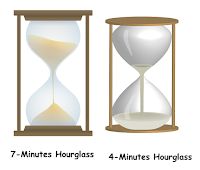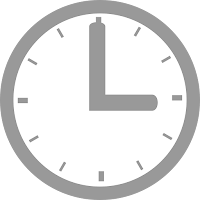Puzzle : Set Timer without Clock?
You are a cook in a remote area with no clocks or other way of keeping
time other than a four-minute and a seven-minute hourglass. On the stove
is a pot of boiling water. Jill asks you to cook a nine-minute egg in
exactly 9 minutes, and you know she is a perfectionist and can tell if
you undercook or overcook the egg by even a few seconds.
How can you cook the egg for exactly 9 minutes?
You should follow THIS process!
How can you cook the egg for exactly 9 minutes?
You should follow THIS process!










